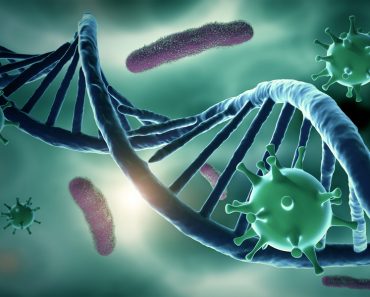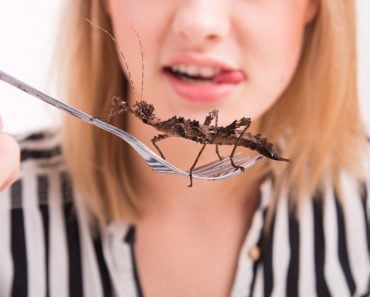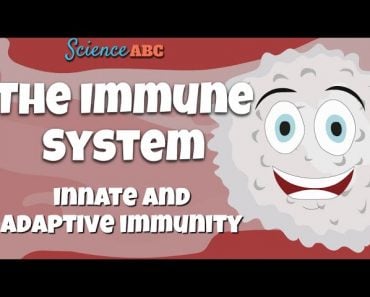Table of Contents (click to expand)
Biopesticides are pesticides derived from naturally occurring sources, such as microorganisms, plants, animals and a few minerals. The 3 categories of biopesticides include microbial pesticides, plant-incorporated protectants and biochemical pesticides.
Delicious tangy tomato sauce, olives, basil, perhaps a bit of truffle sauce, added to dough and baked to perfection! Wouldn’t that make for an excellent pizza? And where do all of these ingredients come from?
Recommended Video for you:
Need For Pest Control
Most ingredients for all of your favorite foods are grown by our essential workers—the farmers. As you can imagine, the job of a farmer is NOT an easy one. They face many challenges, not the least of which are irregular weather conditions, loss of soil fertility, uncertain rainfall and of course, pests. Pests alone account for anywhere from 27 % to 42 % of the total global crop loss that farmers face every year.

To combat these pests, it has become the norm around the world for farmers to use pesticides. Pesticides are chemical compounds that repel or kill pests. These can fall into different categories, such as carbamates, organochlorines, organophosphates, and sulfonylurea.
A common example of an organochlorine pesticide is DDT (Dichlorodiphenyltrichloroethane), which is used to kill insects. It was the extensive utilization of this pesticide during World War II that launched the era of chemical pesticides worldwide.
Problems With Pesticides
There are, however, numerous problems that arise from the use of such chemical pesticides. Environmental pollution is one such grave concern. Toxicity to humans who handle them is another major health hazard. There is growing concern over the chemical residue from pesticides in our food, which is increasingly being linked to various illnesses.
To the farmer, the loss of soil fertility in the long run is perhaps the biggest drawback of using pesticides. However, this is countered in the short term by better crop yield. Thus, its use remains an ongoing dilemma for farmers.

Biopesticides: The Solution
Biopesticides. Biopesticides are naturally occurring pesticides derived from either plants, animals, microorganisms or minerals. They are non-toxic, naturally environmentally friendly and are a key ingredient in sustainable farming. Canola oil or baking soda are easily obtainable and commonly used as biopesticides for home gardens.
Food security is of critical importance due to the world’s growing population. The well-being of humans, as well as global economies, depends upon a stable and reliable food supply. As the population continues to grow, food security will only come under more threat in the future. Sustainable farming and maximizing soil fertility demands non-toxic and environmentally friendly pesticides. Thus, the need for biopesticides seems poised to grow with time.

Types Of Biopesticides
Biopesticides fall into 3 main categories:
- Microbial pesticides
- Plant-incorporated protectants
- Biochemical pesticides
Microbial Pesticides
Microbial pesticides are like security guards hired to protect crops (except they have no labor rights). They are microorganisms, such as viruses, bacteria or fungi that prey on the pests that cause harm to crops. The most common being the bacterium Bacillus thuringiensis (Bt). This bacterium produces a crystal protein that is toxic when eaten by pests, such as caterpillars, moths and worms, proving fatal to them.
What makes this protein so efficient as a pesticide is that these crystal proteins, also known as “Cry toxins” are inactive until they are consumed by the insect. Once ingested by the insect, the protein binds to receptors in the insect’s gut. Once bound to these receptors, it makes a hole in their guts, effectively killing them.
Don’t worry though, this protein is harmless for humans. It does not prove toxic to us, as we don’t possess the receptors in our gut to which this protein binds, so it is an inactive compound outside of the pests that have receptors for them.
Plant-incorporated Protectants
Plant-incorporated protectants (PIPs) are compounds that are toxic to pests, and are produced by plants that have been genetically modified. For example, the gene for the toxic protein produced by Bt is added to such plants, so that they also produce the same protein. This makes the plant toxic for the pests that try to eat it. Once again, the lack of matching receptors prevents any harm to humans from such plants.
Biochemical Pesticides
Biochemical pesticides are herbal pesticides—naturally occurring chemicals that possess pest-repelling properties. Examples of biochemical pesticides include hydrogen peroxide (H2O2), plant oils like eucalyptus oil, lemongrass oil and rosemary oil.
If a man-made compound is structurally similar to a naturally occurring compound, it is still considered a biochemical pesticide. An example is the biochemical pesticide methoprene. Methoprene is structurally similar to insect juvenile hormone (JH).
Methoprene supplied as a pesticide in unnatural quantities mimics the function of JH and disrupts the biological cycle of the insect, thereby interfering with its development.
While most biochemical pesticides have been used successfully, one problem with this category of biopesticides is that there isn’t sufficient scientific research conducted regarding their toxicity or safety. Many of them do possess active ingredients that could prove toxic in high concentrations.
Disadvantages Of Biopesticides
Biopesticides are not a new invention; in fact, they were used long before the development of chemical pesticides. Now, you may be wondering, if biopesticides are so much better, why did people ever bother coming up with chemical pesticides?
A biopesticide is a natural method of pest regulation, so there are factors that cannot be fully controlled. They may take time to kill the target pest, or the microorganisms may have a complex life cycle, or be difficult to handle. Due to storage and handling constraints, biopesticides are more expensive than synthetic pesticides.
A significant amount of investment is required to research new ways to improve biopesticides; coupled with the probability of low profits and financial rewards, companies are reluctant to invest much in this area. Additionally, there are regulatory constraints that come with the production and distribution of biopesticides, as they are biological agents.
Conclusion
Biopesticides are critical to sustainable farming, and major improvements to them will undoubtedly follow. Optimizing production, through lower costs and improved yields, is one way of making biopesticides more financially friendly.
Today, the growing interest in organic, chemical pesticide-free farming has increased the demand for biopesticides. Efforts are being directed towards further research into traditional methods of biopesticide usage so as to reach a better scientific understanding of these time-proven methods.
Currently, the focus of research is on improving their production, commercialization, delivery and awareness amongst farmers.
Overall, biopesticides are environmentally friendly, can target a range of pests, from rodents and insects to microorganisms. They are natural, harmless and bio-degradable (so they don’t remain in the environment or the soil). Thus, biopesticides are an excellent solution to tackle both environmental pollution and pest management.
References (click to expand)
- biopesticides for pests control: a review - ResearchGate. ResearchGate
- Sudakin, D. L. (2003). Biopesticides. Toxicological Reviews. Springer Science and Business Media LLC.
- Copping, L. G., & Menn, J. J. (2000). Biopesticides: a review of their action, applications and efficacy. Pest Management Science. Wiley.
- What are Biopesticides? | US EPA. The Environmental Protection Agency
- Isman, M. B. (2019, November 4). Commercial development of plant essential oils and their constituents as active ingredients in bioinsecticides. Phytochemistry Reviews. Springer Science and Business Media LLC.
- Alavanja, M. C. R. (2009, January). Introduction: Pesticides Use and Exposure, Extensive Worldwide. Reviews on Environmental Health. Walter de Gruyter GmbH.













